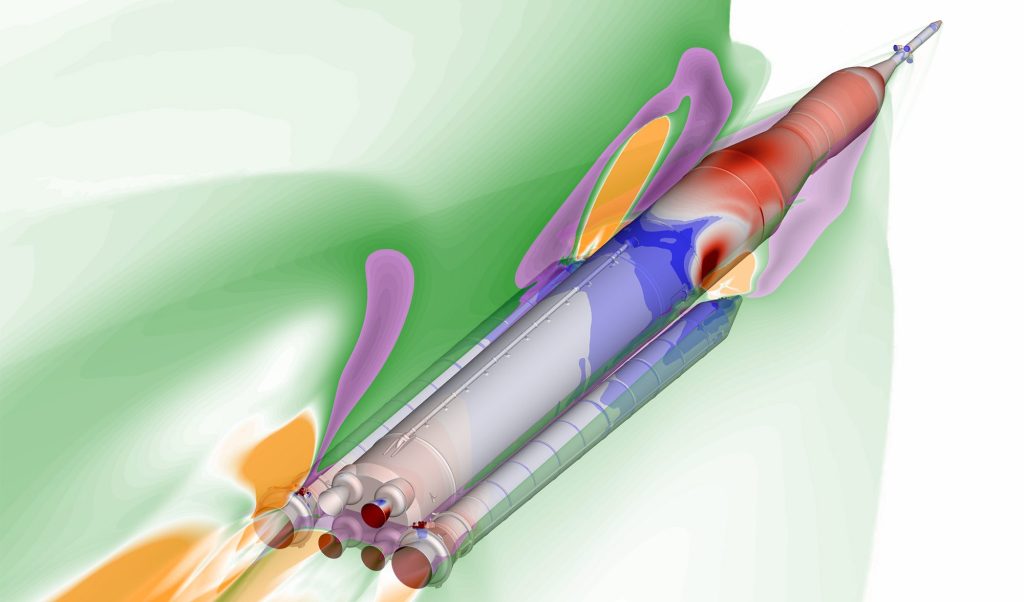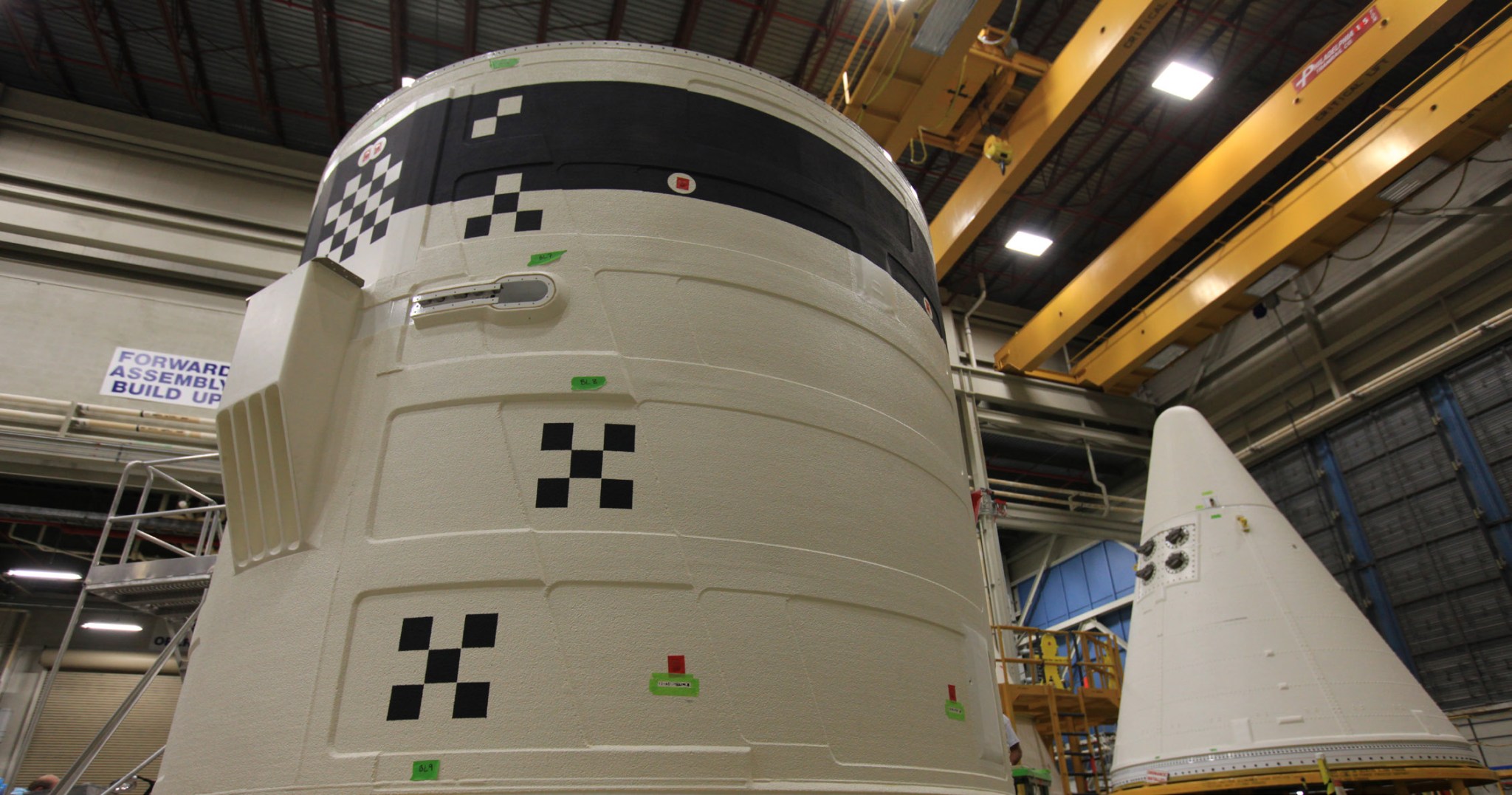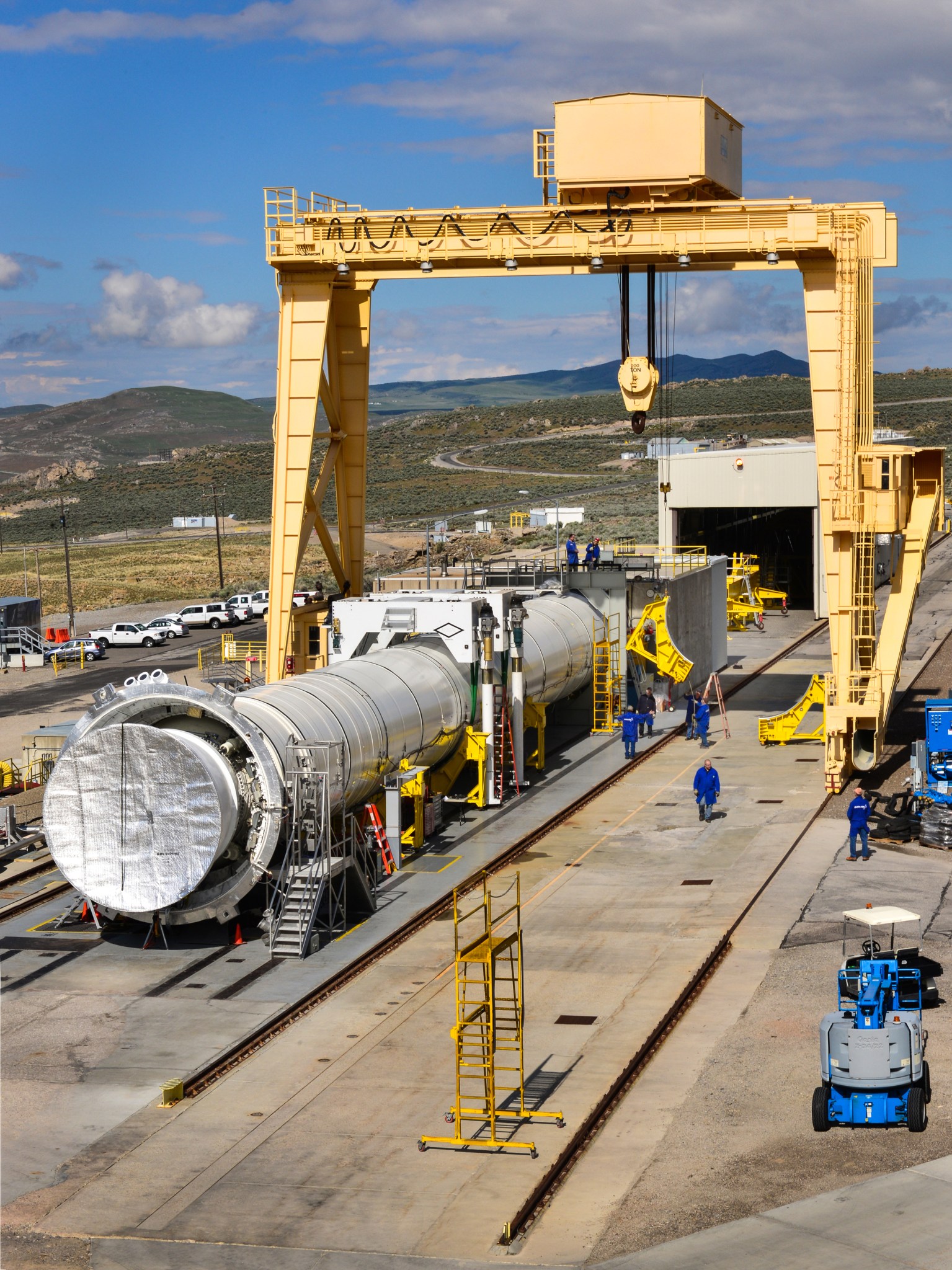In This Week’s Star
- ‘Test Like You Fly’: What Qualification Means for SLS Rocket
- Get SLS Fired Up with Live Coverage of SLS Booster Qualification Test
- Hardware for NASA’s Journey to Mars is ‘Big Catch’ for Upcoming Test Series
- Michoud ‘Tanks’ Up for NASA’s Deep Space Rocket
- Marshall Hosts ‘NASA in the Park’ in Downtown Huntsville
- Marshall Hosts Teen Winner of Space Tool Challenge
- NASA Veteran Michael Rudolphi Offers Insight During ‘Mission Success is in Our Hands’ Event
- Saturn V Stage Journeys to New Home Along Busy Mississippi-Louisiana Border
- This Week in NASA History: Marshall-managed Life and Microgravity Spacelab Launches — June 20, 1996
- Obituaries
‘Test Like You Fly’: What Qualification Means for SLS Rocket
By Megan Davidson
The word “qualification” has become quite synonymous with testing and building the world’s most powerful rocket, NASA’s Space Launch System, which will make missions possible to an asteroid and the journey to Mars.
So, what does it mean for rocket parts to be “qualified” for the mission of going to deep space? And how does that fit in to being ready for that first, uncrewed flight of SLS with the Orion spacecraft in late 2018?
“When you’re building a rocket, there’s a whole flight certification process, and qualification is an important part of that,” said Garry Lyles, SLS chief engineer at NASA’s Marshall Space Flight Center. “It proves the hardware meets the requirements and performs the way it is designed to do. We want to test like we fly.”
The Process to the Pad
Setting requirements is the first step in the flight certification process and essentially answers the question of what the rocket is being built to do. For SLS, the vehicle has requirements to send humans on deep-space missions, including the journey to Mars.
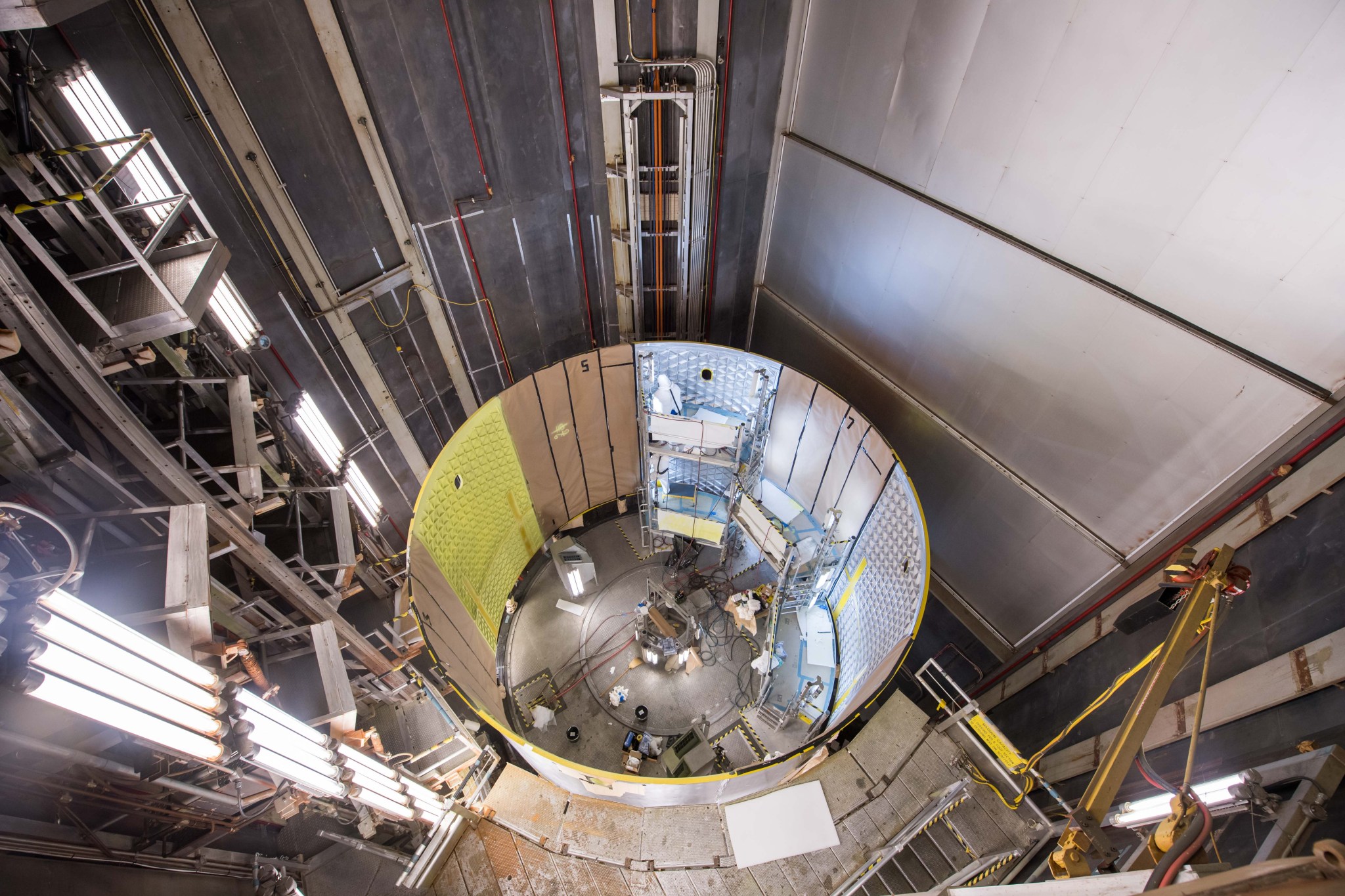
The next step is designing the rocket, and then construction begins before the next step of qualification testing. And that includes building flight hardware.
“NASA’s modeling techniques are extremely mature and have been developed over many, many years,” said Lyles. “A lot of our qualification is done by modeling and analysis, with big margins for safety and other factors. This gives NASA the confidence to go ahead and build flight hardware.”
Lyles says a common misconception about qualification testing is that it means the hardware and systems are “go” for flight. While qualification testing shows various parts of the rocket perform as predicted, NASA still has to integrate and test key elements of the rocket that work together during various phases of the mission.
“After qualification testing, there’s still work to be done,” Lyles said. “We do acceptance tests, like ‘green’ run, where the core stage and engines will be integrated and fired up together, just like they will operate during a launch.”
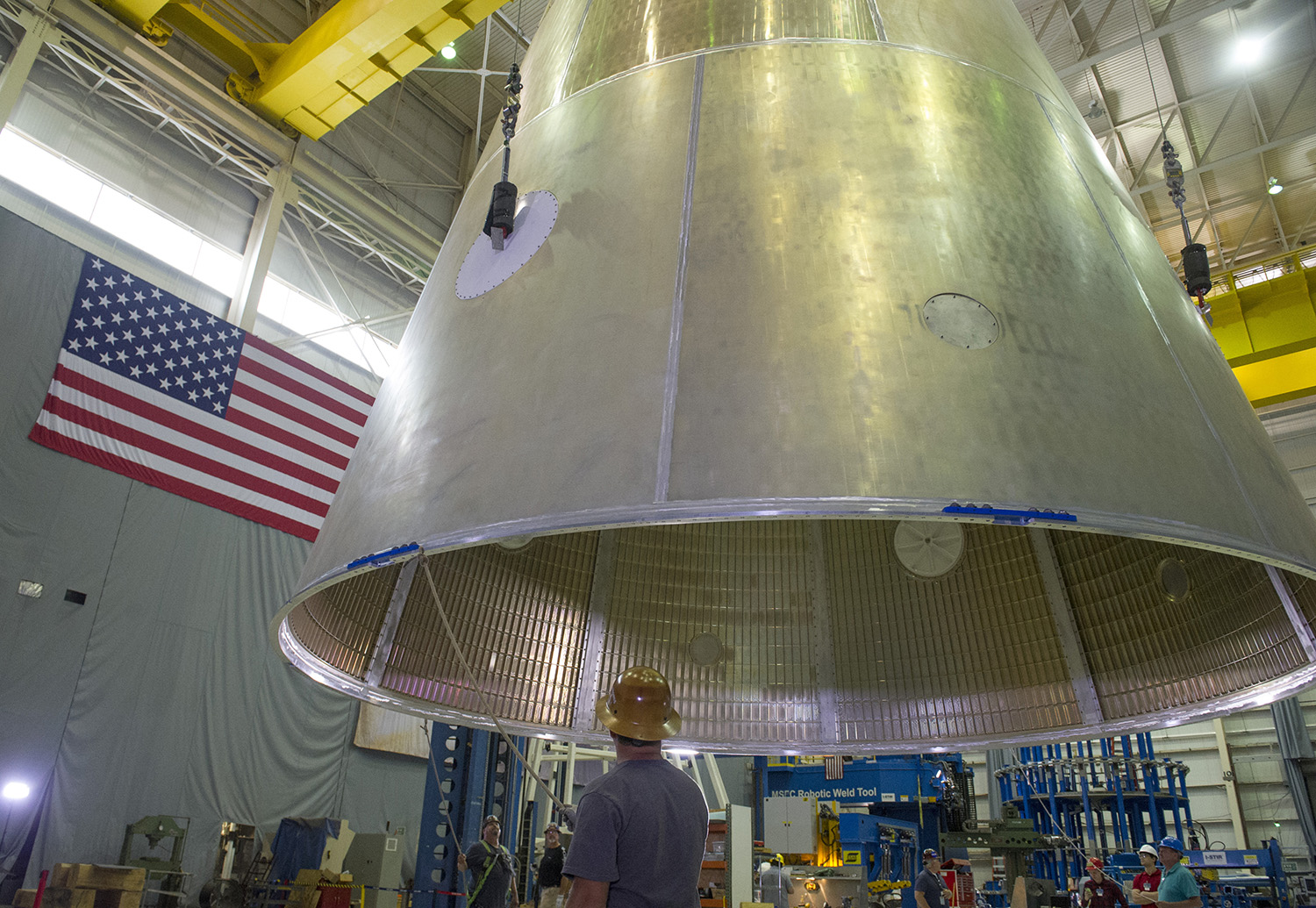
Green run testing at NASA’s Stennis Space Center will occur closer to the launch date, which is scheduled no later than November 2018.
“While the RS-25 engines have been previously certified, they do have some new parts, including the engine controller, and we have to qualify those pieces for flight,” Lyles added. “And we want to make sure the different parts of the rocket, like the core stage and engines, work together as designed.”
A countdown rehearsal, a type of validation test, will happen before SLS lifts off from the launch pad at NASA’s Kennedy Space Center. Engineers will load the rocket with propellant, drain it, and ensure all the ground systems equipment and processes are in place for that maiden flight.
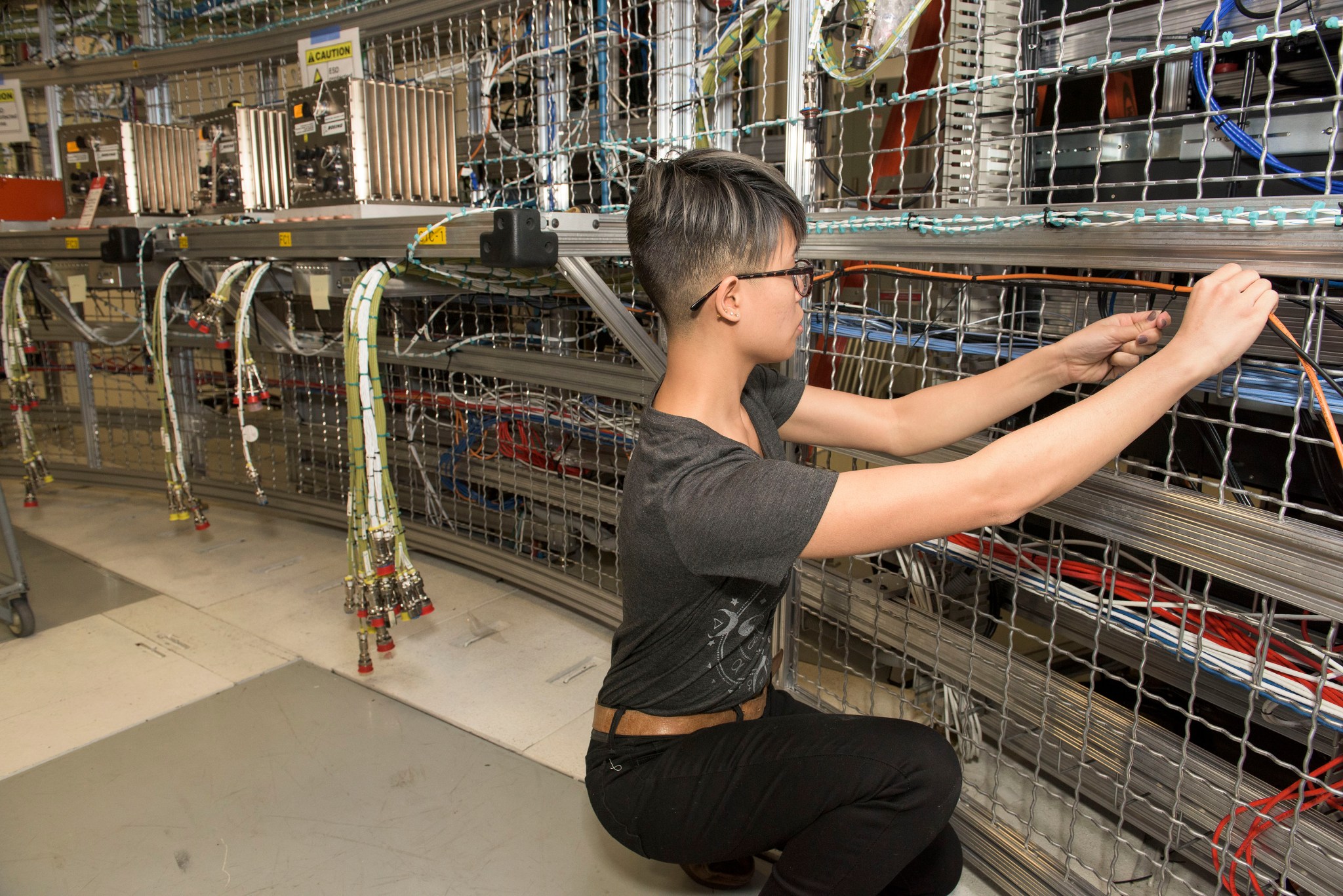
Along with testing and rehearsals, SLS has another program milestone to clear — design certification review. Already passing preliminary design review and critical design review, the rocket will be certified that it meets all design requirements. It will then proceed to the integrated test, checkout and flight readiness review.
“We have come a long way since the beginning of this program in 2011, and it’s the first time in almost 40 years a human-rated rocket has passed critical design review,” said SLS Program Manager John Honeycutt. “I am confident that this vehicle has the capabilities to take us on human exploration missions that have never been accomplished before, and it’s exciting for me, and our workforce, to be a part of that story.”
Davidson, an ASRC Federal/Analytical Services employee, supports the Office of Strategic Analysis & Communications.
Get SLS Fired Up with Live Coverage of SLS Booster Qualification Test
By Megan Davidson
NASA Marshall Space Flight Center team members have the opportunity to watch as the booster for the world’s most powerful rocket, NASA’s Space Launch System, fires up for testing June 28 at Orbital ATK’s test facilities in Promontory, Utah.
Coverage will begin June 27 as NASA Television airs a NASA Social question-and-answer session with agency and Orbital ATK representatives at 2:30 p.m. CDT. NASA Social is a program to provide opportunities for NASA’s social media followers to learn and share information about NASA’s missions, people and programs.
NASA Television’s live coverage and Ustream feed on test day will begin at 8:30 CDT. The two-minute, full-duration ground test will start at 9:05 a.m. and air live on:
- NASA TV
- NASA Ustream
- SLS on ExplorNet
- Center-wide TV monitors
- Desktop TV
There also will be a Facebook Live starting at 8:45 a.m. CDT on the NASA Facebook page.
This is the second ground test for the booster, and will provide NASA with critical data to support booster qualification for the first flight of SLS with the Orion spacecraft. It also will be the last time the booster is fired in a test environment before the first flight of SLS in 2018. During the test, 82 qualification test objectives will be measured through more than 530 instrumentation channels on the booster at a cold motor conditioning target of 40 degrees Fahrenheit – which is the colder end of its accepted propellant temperature range.
The first, full-scale booster qualification ground test was successfully completed in March 2015, which demonstrated acceptable performance of the booster design at 90 degrees Fahrenheit — the highest end of the booster’s accepted propellant temperature range. Testing at the thermal extremes experienced by the booster on the launch pad is important to understand the effect of temperature on the ballistic performance of the propellant.
Davidson, an ASRC Federal/Analytical Services employee, supports the Office of Strategic Analysis & Communications.
Hardware for NASA’s Journey to Mars is ‘Big Catch’ for Upcoming Test Series
By Megan Davidson
In the early morning hours of June 19, fishermen may have seen more than just lures casting out on the Tennessee River in North Alabama. A key piece of hardware for NASA’s new rocket, the Space Launch System, began a five-hour journey by barge from United Launch Alliance in Decatur and was successfully delivered to the Marshall Space Flight Center.
SLS will be the most powerful rocket in the world and enable human missions to deep space, including the journey to Mars.
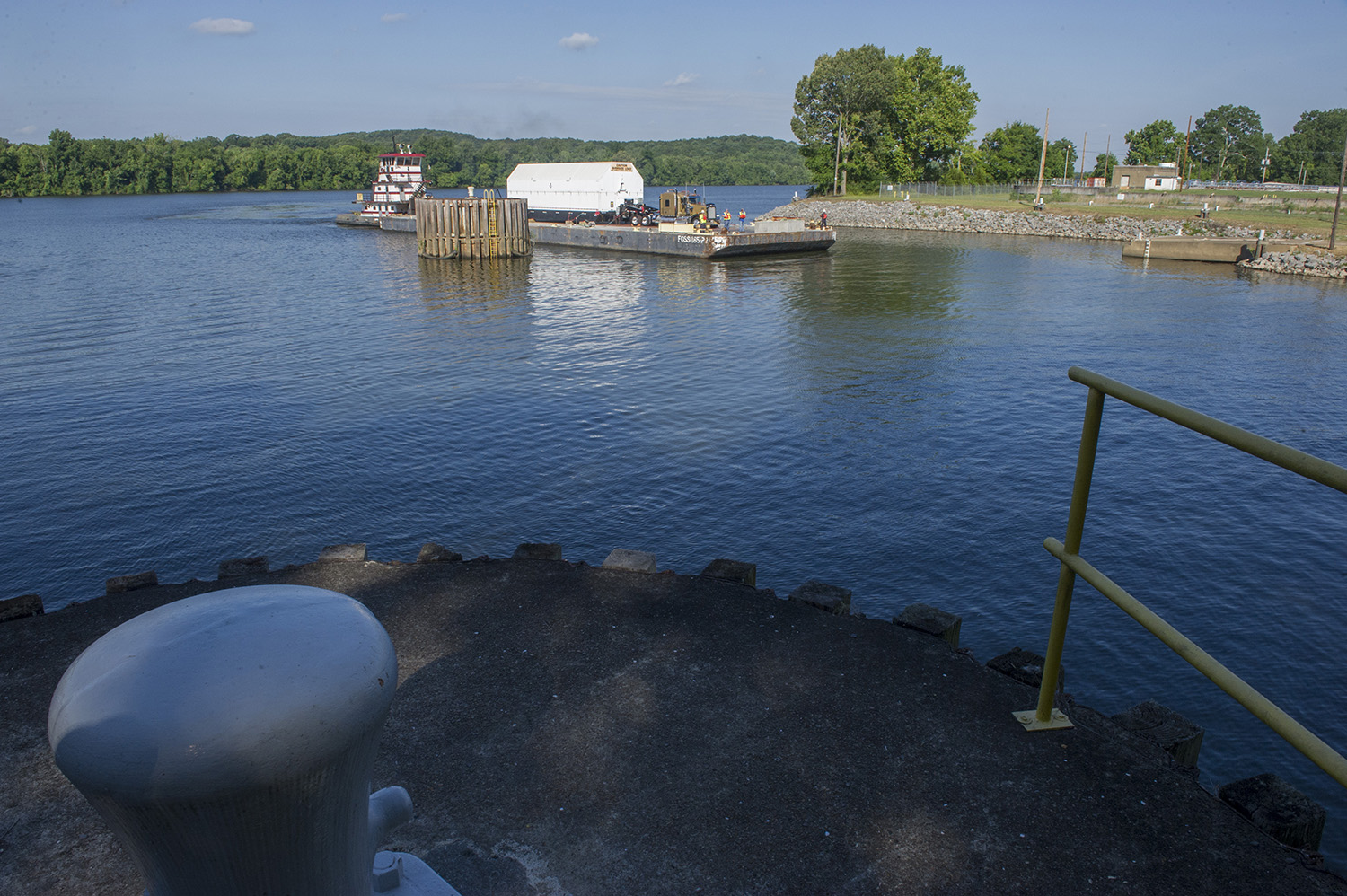
The transported hardware is a prototype of the interim cryogenic propulsion stage, and will be a “big catch” for testing later this year. The ICPS is the liquid oxygen/liquid hydrogen-based system that will give Orion — NASA’s deep-space craft — the big, in-space push needed to fly beyond the moon on its flight with SLS before it returns to Earth.
The test version of the ICPS joins other structural test articles and simulators that make up the upper portion of the rocket. When all the hardware is completed, engineers will stack them together and move the 56-foot-tall structure to a test stand at Marshall.
“The delivery of this test hardware is critical to preparing for a big test series later this year,” said Chris Calfee, ICPS project manager at Marshall, where the SLS Program is managed for NASA. “For that test series, we will subject the hardware to forces similar to those experienced in flight. This will ensure the hardware can handle the forces without compromising the structural integrity of each piece.”
In addition to the ICPS, structural test articles have been completed for the:
- Orion spacecraft simulator — a replica of the bottom portion of the exploration vehicle that will carry the crew to space, provide emergency abort capability, sustain the crew during the space travel and provide safe re-entry from deep space return velocities.
- Orion stage adapter — connects the Orion to the ICPS. The adapter technology was used for Orion’s first test flight in December 2014.
- Core stage simulator — a duplicate of the top of the SLS core stage that is approximately 10 feet tall and 27 feet in diameter. The rocket’s entire core stage will tower more than 200 feet tall and house the vehicle’s avionics and software, and the flight computer. It also will store cryogenic liquid hydrogen and liquid oxygen that will feed the vehicle’s RS-25 engines.
A structural test article for the launch vehicle stage adapter, which connects the core stage and the upper stage, has completed welding and is now being outfitted with hundreds of sensors to collect test data. Engineers also are continuing work on the logistics behind such a large test operation, including building handling equipment that will transport the hardware to the test stand.
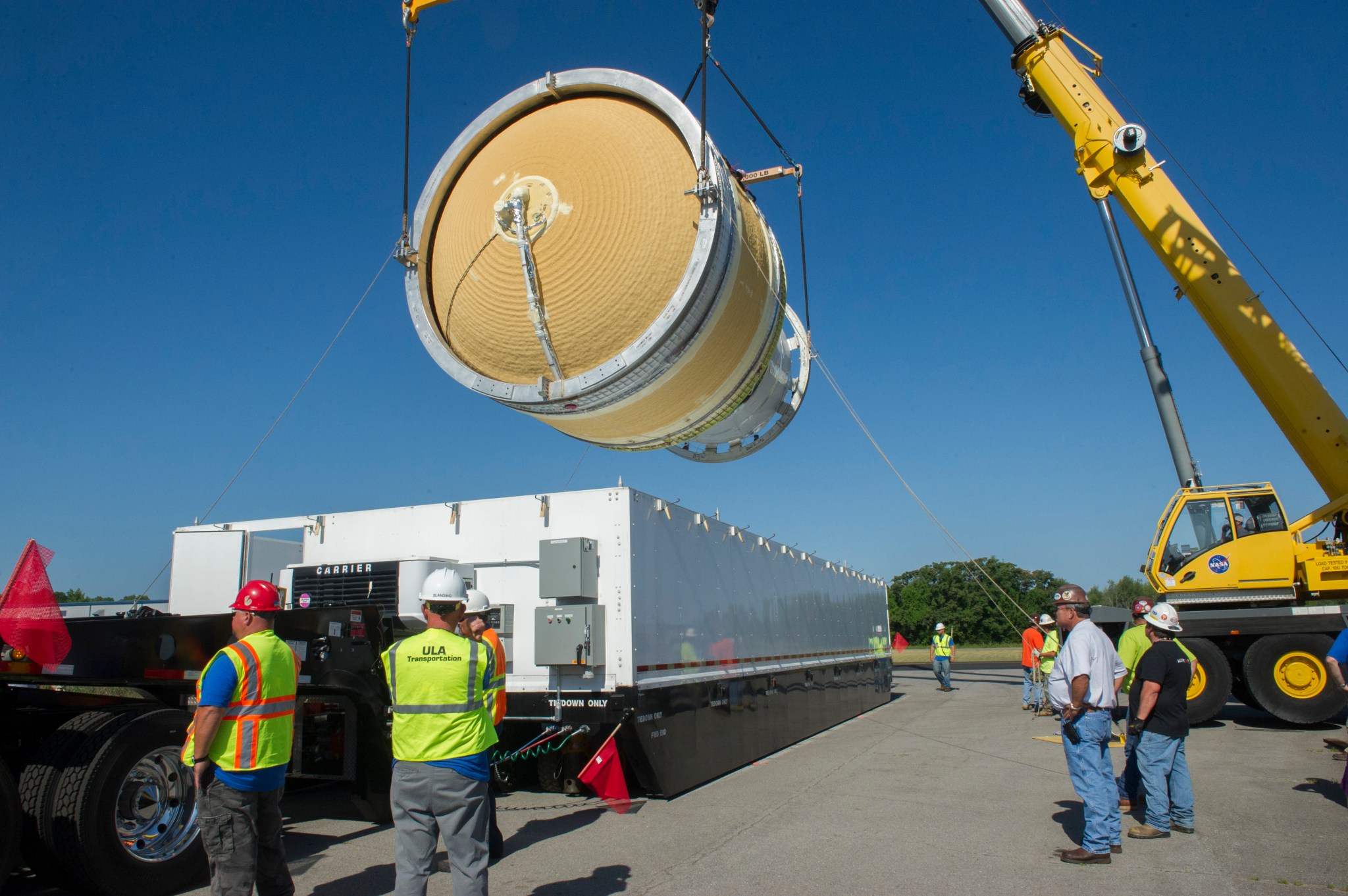
“Testing is probably the most important part of building a rocket,” said Steve Creech, acting director of the Spacecraft and Payload Integration and Evolution Office at Marshall. “We look forward to the test series coming up, and continuing work on flight hardware that is currently in production for the ICPS, Orion stage adapter and LVSA.”
For the ICPS, Boeing modified the design of the existing ULA Delta Cryogenic Second Stage, used on United Launch Alliance’s Delta IV family of launch vehicles. It will be powered by an Aerojet Rocketdyne RL-10B engine — also currently used on the Delta Cryogenic Second Stage. Modifications to the Delta Cryogenic Second Stage include lengthening the liquid hydrogen tank, adding hydrazine bottles for attitude control and making some minor avionics changes to meet the design parameters and performance characteristics as needed by NASA to meet the flight objectives.
The Boeing/ULA team is working to complete production of the ICPS flight hardware that will launch on the first SLS flight with Orion in late 2018. “We are making great progress on the flight hardware with our ULA and NASA partners,” said Cataldo Mazzola, Boeing ICPS test manager.
Davidson, an ASRC Federal/Analytical Services employee, supports the Office of Strategic Analysis & Communications.
Michoud ‘Tanks’ Up for NASA’s Deep Space Rocket
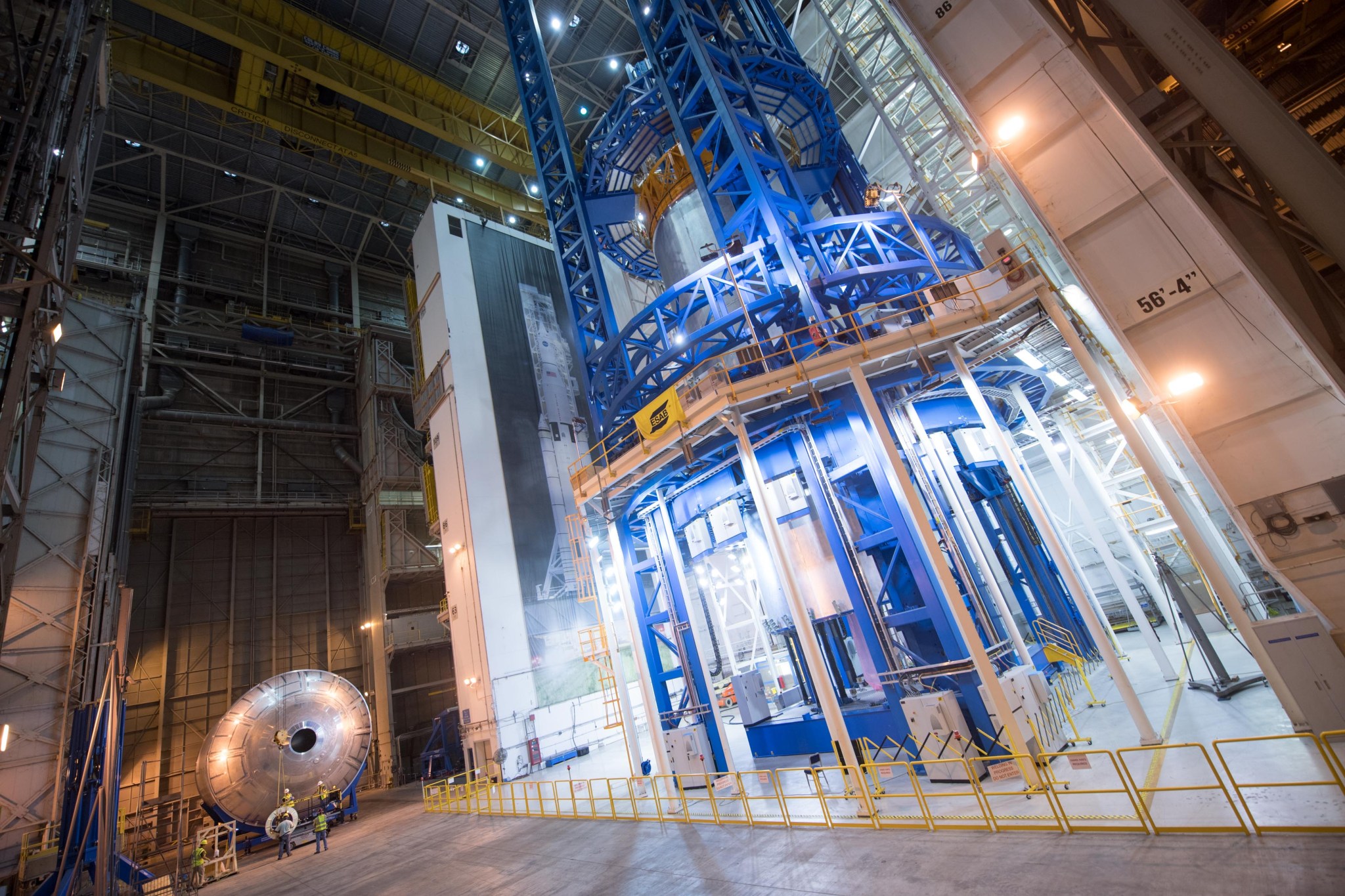
A qualification article for the liquid hydrogen tank on NASA’s new rocket, the Space Launch System, undergoes welding in the Vertical Assembly Center at Michoud Assembly Facility. At the same time, a crew completes installation and checkout procedures for the liquid oxygen tank weld confidence article, left. The liquid hydrogen and liquid oxygen tanks make up the SLS core stage. Confidence hardware verifies weld procedures are working as planned and tooling-to-hardware interfaces are correct. The confidence article also will be used in developing the application process for the thermal protection system, which is the insulation foam that gives the tank its orange color. The liquid hydrogen qualification article closely replicates flight hardware and processing procedures. Once completed, it will be shipped on the Pegasus barge to NASA’s Marshall Space Flight Center for structural loads testing on one of two new test stands currently under construction for the tanks. (NASA/Michoud/Steven Seipel)
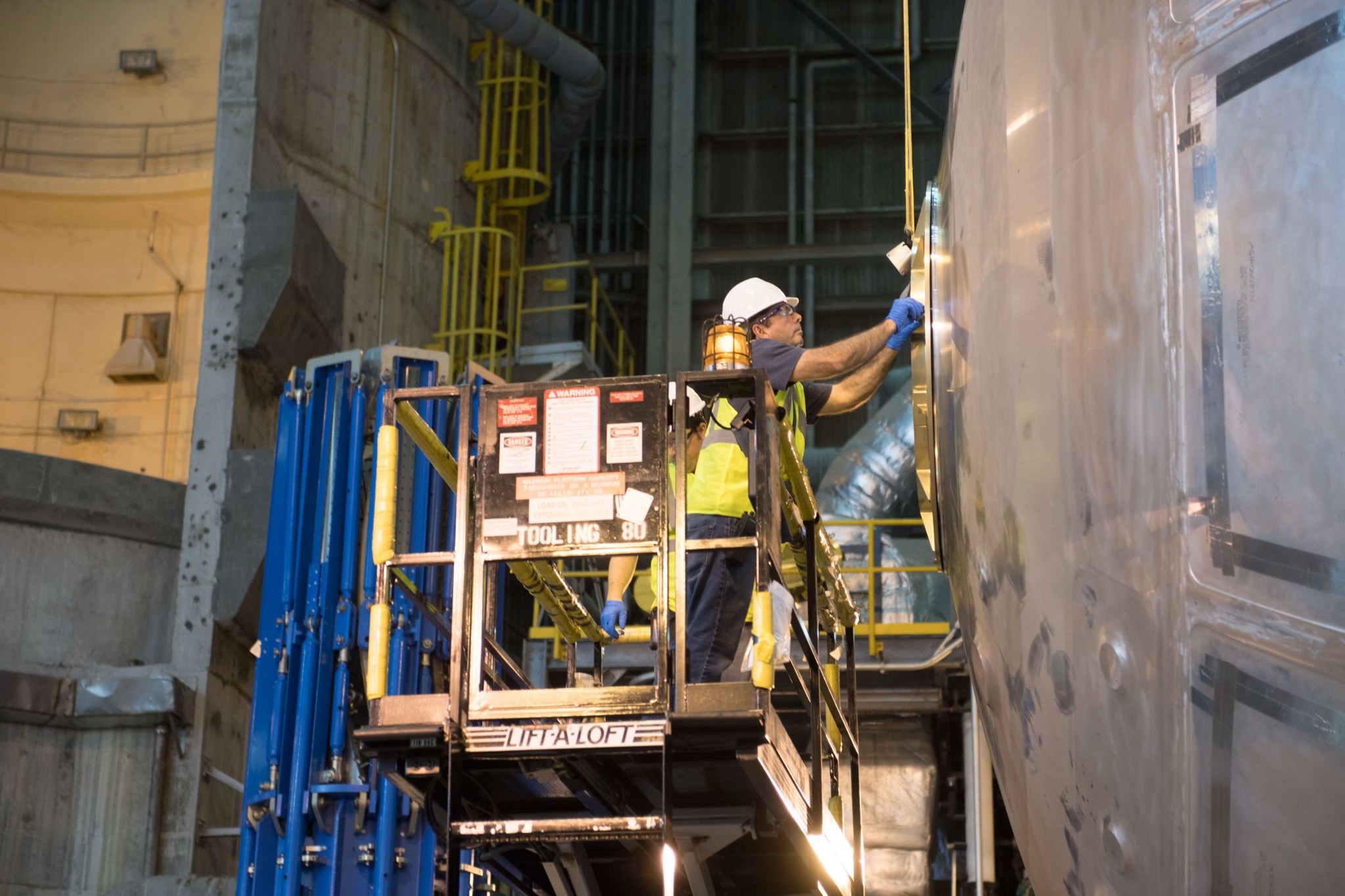
Todd Gough, a Boeing fabrication specialist at Michoud, installs the end cap test fixture on a weld confidence article of the SLS liquid oxygen tank. The end cap text fixture is used to control environments inside the tank and will be used when the tank is moved to another part of the facility for thermal protection system process development. All welding for the SLS core stage for the initial Block I configuration of the rocket — including confidence, qualification and flight hardware — will be completed this summer in preparation for its first test flight with NASA’s Orion spacecraft in late 2018. That flight, called Exploration Mission 1, is critical to paving the way for future flights with astronauts to deep space, including on a journey to Mars. The Boeing Co., headquartered in Chicago, is the prime contractor for the SLS core stage, including avionics. (NASA/Michoud/Steven Seipel)
Marshall Hosts ‘NASA in the Park’ in Downtown Huntsville

More than 7,500 people attended NASA Marshall Space Center and Downtown Huntsville, Inc.’s third annual celebration of NASA and the community June 18. This year, the event moved to Huntsville’s Big Spring Park, becoming “NASA in the Park.” The celebration featured fun for all ages, live music performed by Marshall team members and a special appearance by NASA astronaut Don Thomas. For more pictures from NASA in the Park, visit Marshall’s Flickr page. (NASA/MSFC/Emmett Given)
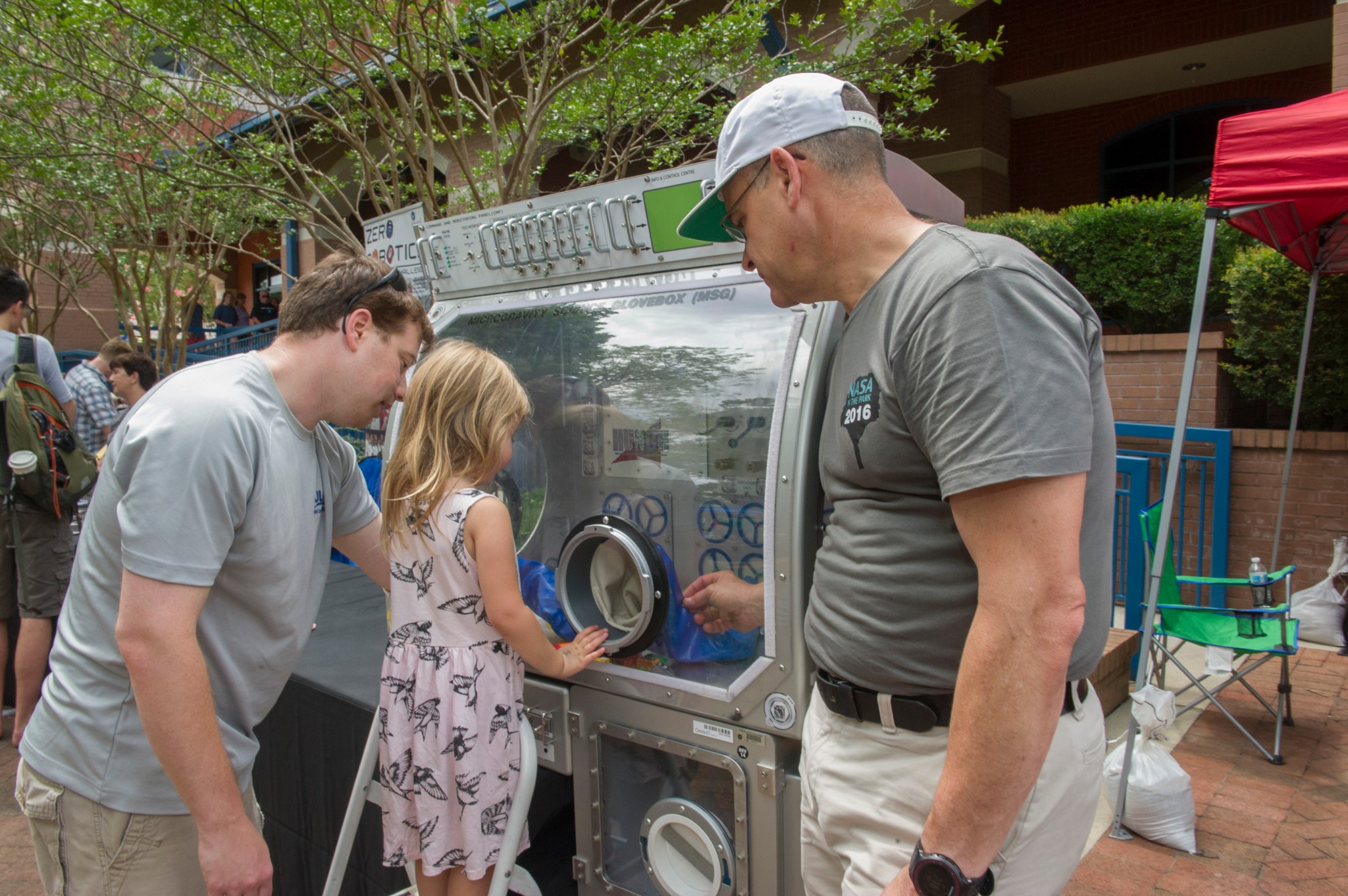
Walter Schneider, an engineer in Marshall’s International Space Station Office, demonstrates a replica of the Microgravity Science Glovebox. The space station’s Microgravity Science Glovebox has a large front window and built-in gloves, creating a sealed environment to contain liquids and particles in microgravity for science and technology experiments. The MSG booth was one of more than 60 exhibits — including three large Space Launch System inflatables, a full-scale Orion spacecraft inflatable, an RS-25 engine and much more — where Marshall team members shared their work with the community. (NASA/MSFC/Emmett Given)
Marshall Hosts Teen Winner of Space Tool Challenge
By Bill Hubscher
When NASA fired up the Additive Manufacturing Facility on the International Space Station to begin more testing of the emerging 3-D printing technology in orbit, one college student in particular watched intently.
In autumn of 2014, a high school senior in Enterprise, Alabama, Robert Hillan entered the Future Engineers Space Tool design competition, which challenged students to create a device astronauts could use in space. The catch was that it must be uploaded electronically and printed on the new 3-D printer that was going to be installed on the orbiting laboratory.
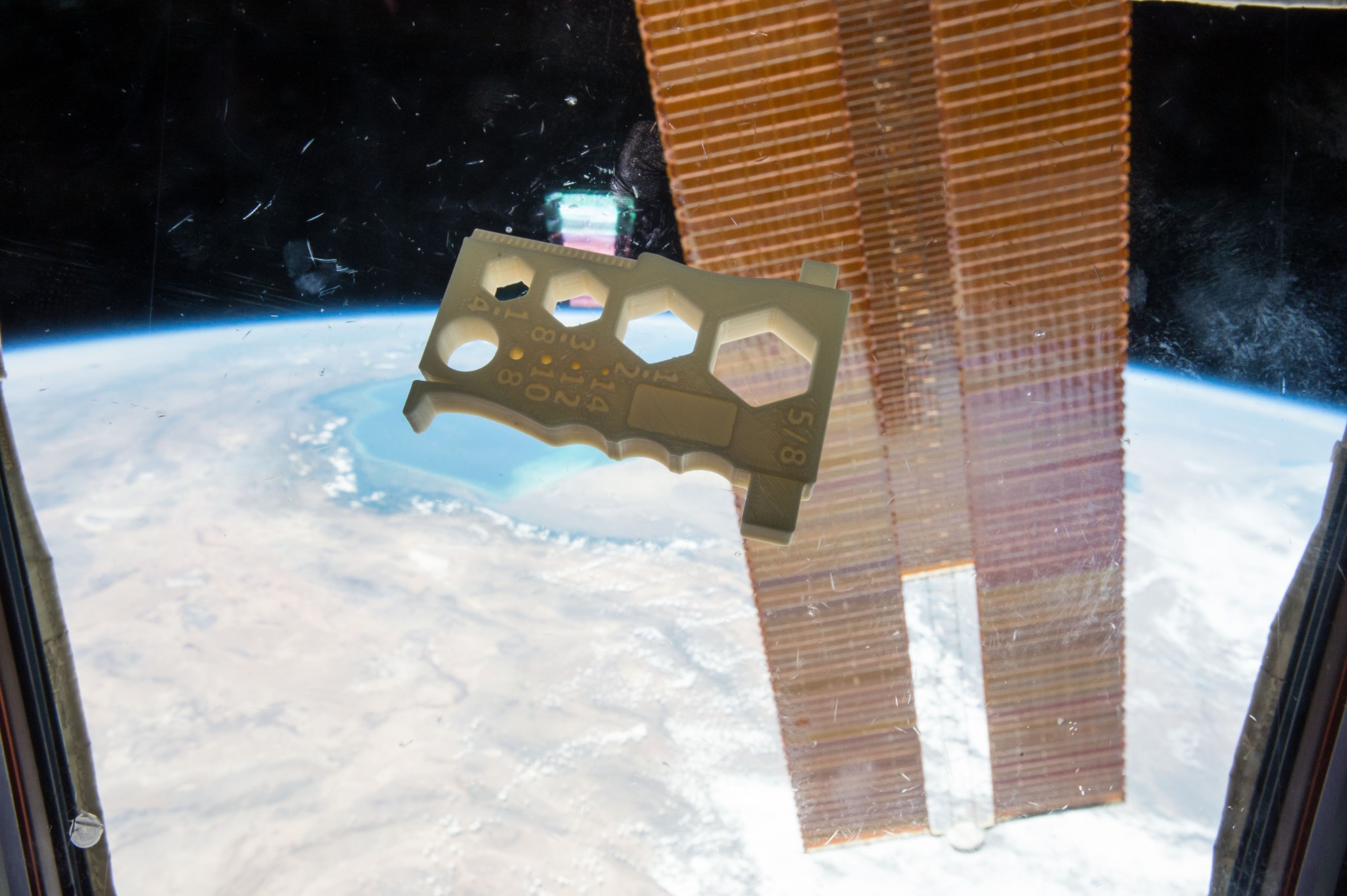
In January 2015, NASA and the American Society of Mechanical Engineers Foundation announced that Hillan’s design, a Multipurpose Precision Maintenance Tool, was selected out of hundreds of entries to be printed on the station.
“Our challenges invite students to invent objects for astronauts, which can be both inspiring and incredibly tough,” said Deanne Bell, founder and director of the Future Engineers challenges. “Students must have the creativity to innovate for the unique environment of space, but also the practical, hands-on knowledge to make something functional and useful. It’s a delicate balance, but this combination of creativity, analytical skills and fluency in current technology is at the heart of engineering education.”
Hillan’s design features multiple tools on one compact unit, including different sized wrenches, drives to attach sockets, a precision measuring tool for wire gauges, and a single-edged wire stripper. After the new manufacturing facility was installed on the station in March, NASA uploaded Hillan’s design to be printed.
As a bonus, Hillan was invited to watch his tool come off the printer from a unique vantage point. On June 15, standing amidst the flight controllers in the Payload Operations Integration Center at NASA’s Marshall Space Flight Center, which is mission control for space station science, Hillan looked on as NASA astronaut Jeff Williams displayed the finished tool from the station’s Additive Manufacturing Facility.
“I am extremely grateful that I was given the opportunity to design something for fabrication on the space station,” said Hillan, now a sophomore engineering student at the University of Alabama in Huntsville. “I have always had a passion for space exploration, and space travel in general. I designed the tool to adapt to different situations, and as a result I hope to see variants of the tool being used in the future, hopefully when it can be created using stronger materials.”
Not only did Hillan get to watch his tool being made, he also got to spend a few minutes chatting with astronauts on the station.
NASA astronaut Tim Kopra, a current station crew member, congratulated Hillan, saying “When you have a problem, it will drive specific requirements and solutions. 3-D printing allows you to do a quick design to meet those requirements. That’s the beauty of this tool and this technology. You can produce something you hadn’t anticipated and do it on short notice.
“You have a great future ahead of you.”
The space station’s 3-D printer caught national headlines late in 2014 when it started operations and built nearly two dozen sample designs that were returned to Marshall for further testing. NASA is continuing 3-D printing development that will prove helpful on the journey to Mars.
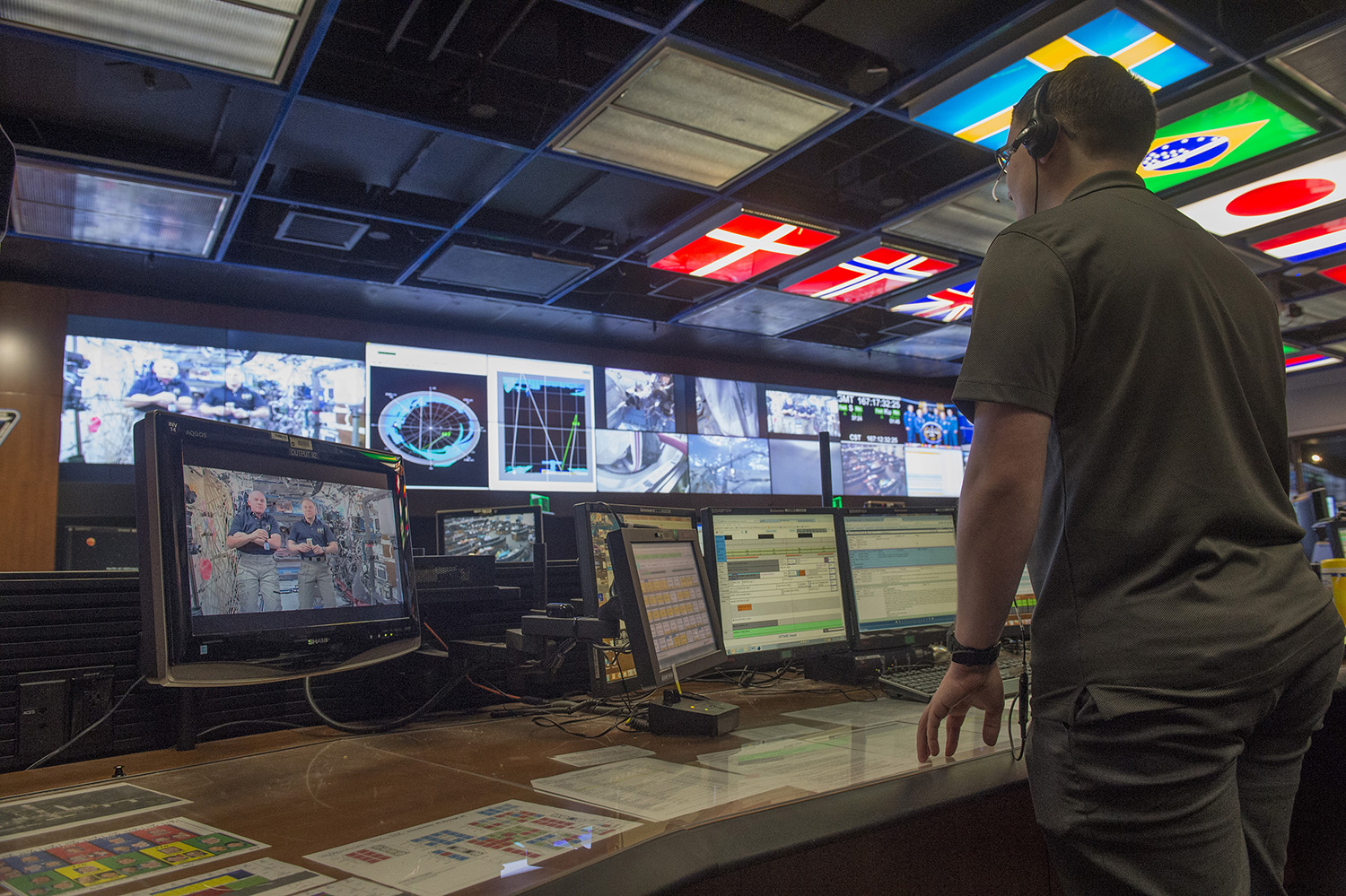
“When a part breaks or a tool is misplaced, it is difficult and cost-prohibitive to send up a replacement part,” said Niki Werkheiser, NASA’s 3-D Printer program manager at Marshall. “With this technology, we can build what is needed on demand instead of waiting for resupply. We may even be able to build entire structures using materials we find on Mars.”
Winning this competition made Hillan see the space industry in a different light, and it may have changed the direction of his future.
“When I won the competition, I started seeing problems I face as new opportunities to create and learn,” Hillan said. “Since then I have tried to seize every opportunity that presents itself. I love finding solutions to problems, and I want to apply that mentality as I pursue my engineering degree and someday launch my own company.”
Hubscher, an ASRC Federal/Analytical Services employee, supports the Office of Strategic Analysis & Communications.
NASA Veteran Michael Rudolphi Offers Insight During ‘Mission Success is in Our Hands’ Event
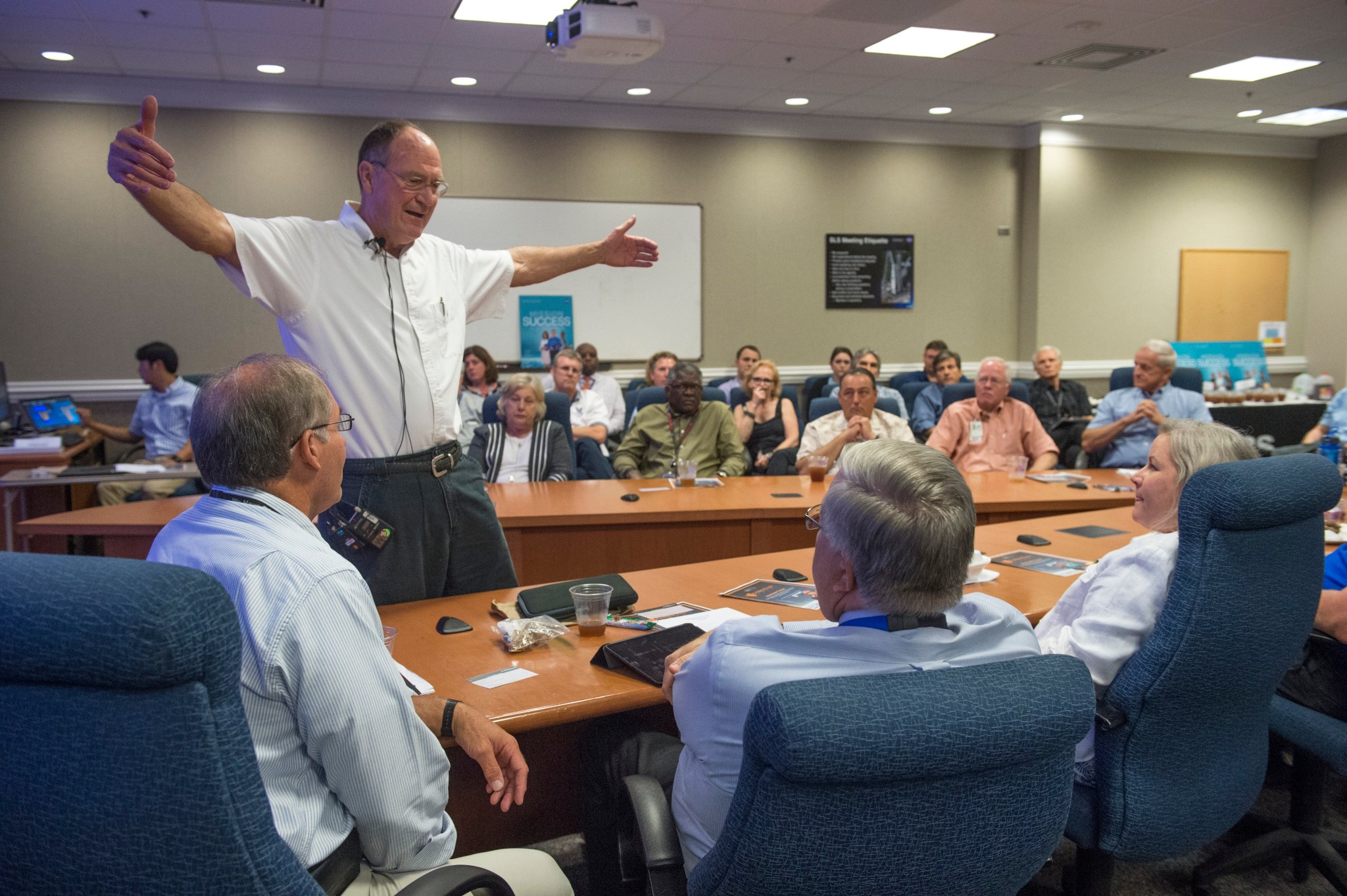
Former Marshall Space Flight Center engineer Michael “Rudi” Rudolphi gestures during a “Mission Success is in Our Hands” Shared Experiences forum June 16, cosponsored by Jacobs Engineering of Huntsville. Rudolphi spoke about his “unforgettable” experiences as a senior NASA representative overseeing debris recovery efforts following the loss of space shuttle Columbia and its crew. A NASA veteran of more than three decades, Rudolphi served as director of Marshall’s Engineering Directorate from 2005-2007. He retired from NASA in 2007, but continues to share his leadership and rocket lessons with NASA and the aerospace industry, as an engineering consultant and human spaceflight mentor. The bimonthly Shared Experiences forum series is part of a safety initiative to promote and strengthen mission assurance and flight safety. (NASA/MSFC/Emmett Given)
Saturn V Stage Journeys to New Home Along Busy Mississippi-Louisiana Border

A Saturn V S-IC first stage, complete with five, rear-mounted F-1 rocket engines, departs NASA’s Michoud Assembly Facility by barge June 16, beginning its journey to the Infinity Science Center in Pearlington, Mississippi, the official visitor’s center for NASA’s Stennis Space Center. The massive stage, test-fired at Stennis in 1970 but never flown, was the last of its kind constructed at Michoud. It guarded the entrance to the sprawling assembly facility from 1978 to 2016. From its new home at the Infinity Science Center, it will be visible to drivers along Interstate 10. NASA built 19 Saturn S-IC stages, including four ground-test units. Thirteen were launched between 1967 and 1973, and nine of those carried crews to the moon. Only four of the stages remain intact today. (NASA/MAF/Steven Seipel)
This Week in NASA History: Marshall-managed Life and Microgravity Spacelab Launches — June 20, 1996
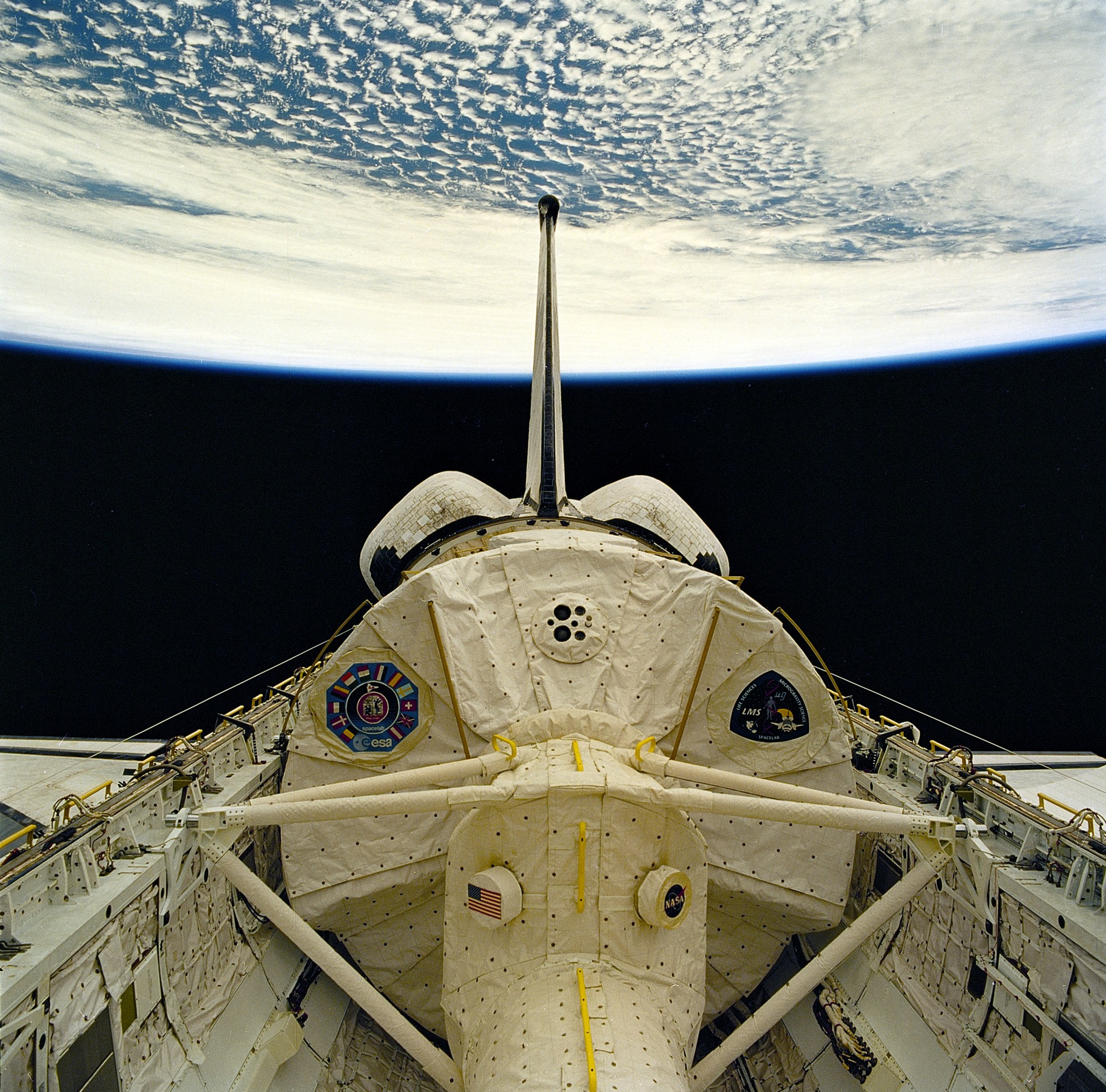
This week in 1996, STS-78 and its primary payload, the Life and Microgravity Spacelab, launched. During the 17-day spaceflight, the crew conducted a diverse slate of experiments divided into a mix of life science and microgravity investigations. Five space agencies — NASA, European Space Agency, French Space Agency, Canadian Space Agency and Italian Space Agency — along with research scientists from 10 countries worked together on the design, development and construction of the laboratory. LMS investigations, managed by NASA’s Marshall Space Flight Center, conducted the most extensive telescience to date, similar to investigations on the International Space Station. Today, Marshall is home to the Payload Operations and Integration Center — the command center for all science operations on the ISS, ensuring successful science operations to benefit people on Earth and to pave the way for deep space exploration. Flight controllers are on the clock 24 hours a day, 365 days a year to help astronauts in orbit and scientists on the ground. The NASA History Program is responsible for generating, disseminating and preserving NASA’s remarkable history and providing a comprehensive understanding of the institutional, cultural, social, political, economic, technological and scientific aspects of NASA’s activities in aeronautics and space. For more pictures like this and to connect to NASA’s history, visit the History Program’s webpage. (NASA)
Obituaries
Bennett Hendricks, 90, of Huntsville, died June 17. He retired from the Marshall Center in 1975 as an aerospace engineer.
Edwin A. Weaver, 84, of Huntsville, died June 19. He retired from the Marshall Center in 1998 as an aerospace engineer.
Thomas O. Davidson, 90, of Decatur, Alabama, died June 19. He retired from the Marshall Center in 1988 as an aerospace engineer.















